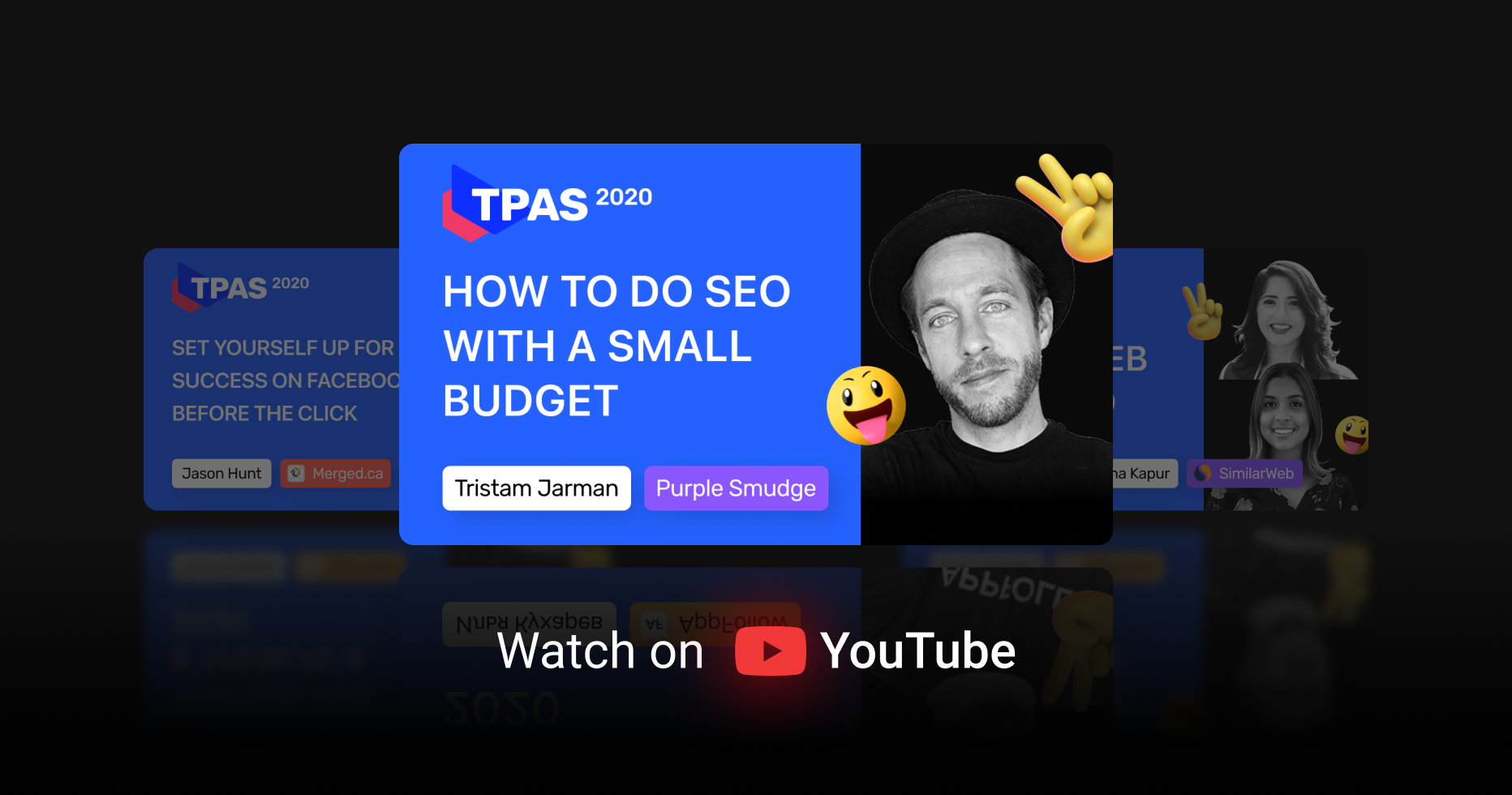Is It Still Worth Doing SEO for Small Businesses in 2020?
It definitely is. Though some companies and businesses believe it has become impossible to compete against bigger brands, there are always many opportunities to flourish in organic search if you look in the right place.
Know Your Limits and Identify Your Strengths
Before you jump into any campaign, it’s vital to identify your limits and strengths and build your business strategy accordingly.
Find Your Limits
If you’re a small business, you may have a limited amount of time, resources, knowledge, or budget.
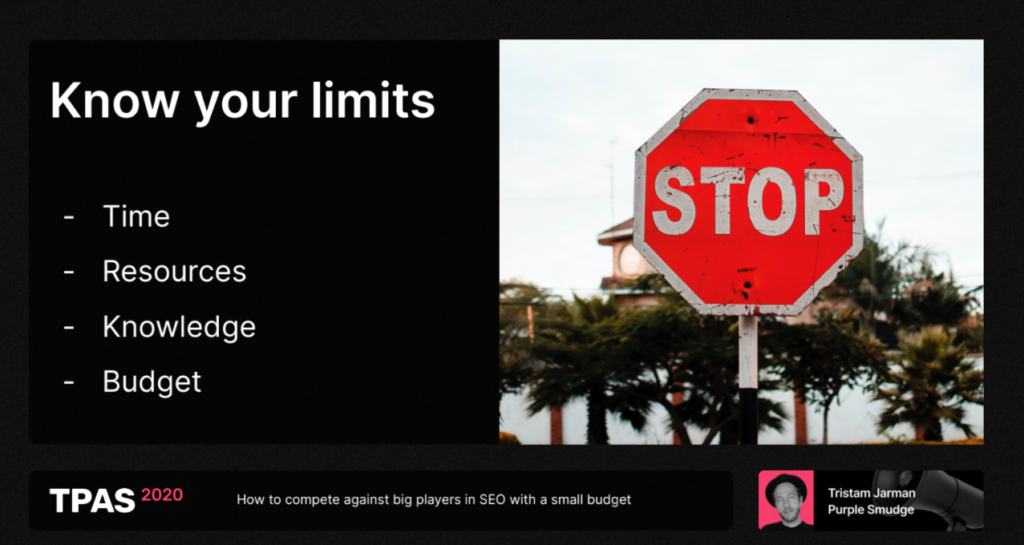
Time
Most of us are strapped for time and digital creators are no exception. So, you’re also likely to have a limited amount of time on your hands to dedicate to SEO efforts. Here are some ways to tackle this problem:
- Determine which processes you can speed up
- Automate particular areas, such as periodical site crawls
- Farm certain tasks out to trusted freelancers
- Do skill swapping
- Pay extra attention to planning
Resources
Most likely, you have less resources than niche giants, at least in terms of staff and budget. However, in this video [3:30], Tristam explains that limited resources can be a blessing in disguise as they allow you to be more flexible than your larger competitors. Besides, you can make decisions faster as you have less sign off processes and hoops to jump through.
Knowledge
In some cases, a lack of knowledge could be what’s holding you back. For example, you may need to learn more about a new area of SEO, such as running a technical SEO audit, running a better keyword research processes, or building links and working on your digital PR.
Budget
Budgets can be another major hurdle to overcome when competing against the biggest players in your sector, as limited budgets mean that you can’t work outside of your skillset. For example, if you have no money to hire a designer, content manager, or media producer, you might feel constrained by the cost of asset creation.
Identify Your Strengths
Once you’ve discovered your limitations, it’s time to identify your strengths and capitalize on them. For example, you may already be adept at producing top-notch content or performing digital PR.
Also, Tristam shares an example [10:16] of how businesses can use pre-existing relationships to their advantage and make them mutually beneficial. You can create a piece of content about a local business, feature them among the top places to visit, do interviews for them, etc. In return, you can ask them to push this content through social media. This can help you establish yourself as a trusted authority in your space and yield better business results.
How to Fill in the Gaps
It’s also vital to understand how you can fill in all the gaps without breaking the bank.
Budget
You might feel that cash rules everything and gives big players a competitive edge. However, there is a wealth of software and information to help you accomplish what you need on a shoestring budget or even for free.
Tristam shares a list of some top-quality, free tools that you can leverage for your business. These can help you with analytics, keyword research, technical SEO, making your website mobile-friendly, and testing your site speed.
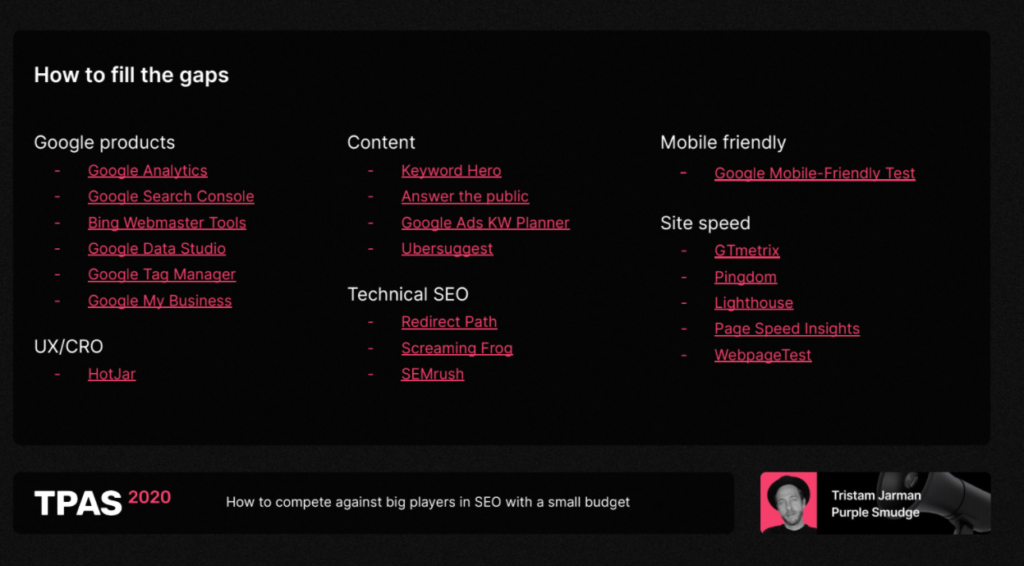
Knowledge
If a lack of knowledge is hindering your business success, you also need to identify key areas that need improvement and boost your expertise through:
- Conferences
- Newsletters
- SEO-related chats and groups on social media (EcomChat, SEMrush Chats, PPCChat)
- Webinars (Travelpayouts, SemRush)
- Blogs on SEO
- Courses
- Asking SEO experts for advice
- Digital networking with other webmasters
In the video [4:18], the speaker shares hints on how to improve your SEO knowledge and provides an extensive list of top-quality resources for this purpose.
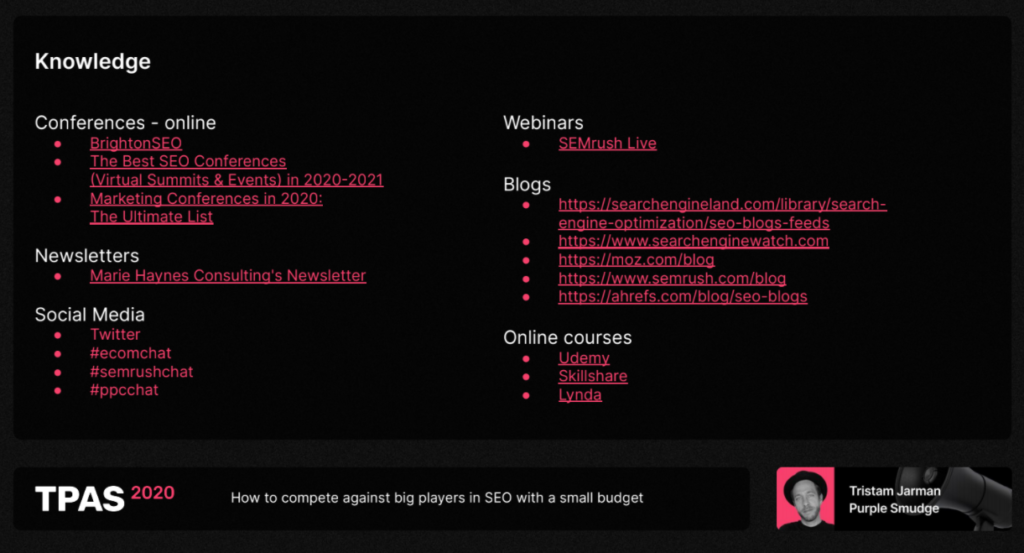
Start Small
When it comes to SEO, there are many so areas to focus on that you may become easily overwhelmed by the amount of information to learn and things to manage. So, the best advice is to start small and prioritize what you’re focusing on.
What else do you need to do in order to fast track your business growth and compete against the big guns?
Learn From Your Competitors
In the video [22:20], Tristam highlights that one of the best ways to propel your business success is to research competitors. However, he also warns against becoming a copycat, as doing so can undermine your reputation and will only contribute to competitors’ success.
So, what should you focus on when performing a competitor analysis? To start off, take a close look at any backlinks, keywords, or long-tail keywords they fail to use. Also, examine the areas in which their content outranks yours.
Here are some great tools for competitive analysis: Ubersuggest, SpyFu, SEMrush, Ahrefs, BuzzSumo, Google’s Advanced Search Operators.
Conduct a Technical SEO Audit
Before moving in any one specific SEO direction, make sure you pay attention to the health of your website. In most cases, there is always a technical SEO issue that needs to be resolved and monitored moving forward. Even if you’re creating top-notch content, these issues may hinder your Google rankings.
This is why it’s vital to run a technical SEO audit on your website and get it into a more technically sound position in order to gain a competitive edge. To discover what your technical SEO issues are, ask yourself the following questions:
- What’s holding your SEO efforts back and possibly alienating visitors?
- Have you migrated from HTTP to HTTPS?
- Was this migration carried out effectively or might you still be suffering from some residual effects of said migration?
- What does your backlink profile look like, including anchor text?
- What do the optimized pages on your site look like? Are they growing in visibility?
There are many programs you can use to audit a website. However, the SemRush SEO audit tool does a lot more than perform site audits. SemRush also gives you a great overview of the issues found on your website, along with some guidance on how to fix them. With SemRush, you can also set up periodical crawls, which keep you on top of your website’s health and will hopefully drive your website above the competition.
In the video [32:55], Tristam also explains why it’s vital to use Google Search Console to identify certain errors and issues and ensure you’re clearing these up.
Create a User-Friendly Website
Another crucial thing that influences your performance is the user-friendliness of your website. You can pay for user testing or simply ask people you know to complete a specific task on your website and see what the results are.
There are also great tools to serve this purpose, such as HotJar. In the video, Tristam demonstrates [36:07] how you can use HotJar heatmaps to see users’ interactions with your pages. For example, you can learn whether users are clicking or tapping on the page, where they move their mouse, or how far they scroll down on each page. This helps identify where visitors are confused or stuck and you can use this feedback to improve the user experience.
HotJar can also record exactly what users are doing on your websites. You can literally see how people are using your website and identify usability issues in a hassle-free way.
Another way to level up your site performance with HotJar is through surveys. Why not ask visitors about your website usability and get instant feedback from them?
Using these three Hotjar features can help you eliminate many friction points on your website and boost customer satisfaction.
Make Sure Your Website Is Optimized for Mobile
We live in a mobile-first world, which is why it’s crucial to optimize your website for mobile. The speaker explains [38:05] why it’s necessary to ensure your website functions seamlessly both on mobile and desktop. To that end, you can run your website through Google’s mobile-friendly tool. This is a great starting point to understand how your site looks and functions on mobile devices.
Optimize Your Content
Once your site has traffic coming in, it’s crucial to get visitors to stay, browse, convert, and share posts with others. One of the ways to do this is to offer them top-quality compelling content.
Here are some tips for improving your content:
- Update existing posts before creating new ones.
- Focus on what your competitors are forgetting. Look for content opportunities and fill in the gaps on your competitors’ websites.
- Conduct keyword research and optimize your content for long-tail key phrases.

- Track your keyword rankings to understand how your existing content is being discovered.
- Polish, reoptimize, and republish your current content. You can use the tools we’ve already mentioned, such as SEMrush and Google Search Console, to get insights about content performance and optimize your existing content for success.

You should also remember that making a single change is not likely to catapult you to the top. SEO is more like a bunch of little pieces that come together to make one big, yummy-smelling pie.
Speed Kills: Improve Page Speed With Minimal Effort
Tristam points out [43:30] that studies by Google and Kissmetrics reveal that longer load time negatively affects conversions and can cause a considerable decrease in your conversion rate.
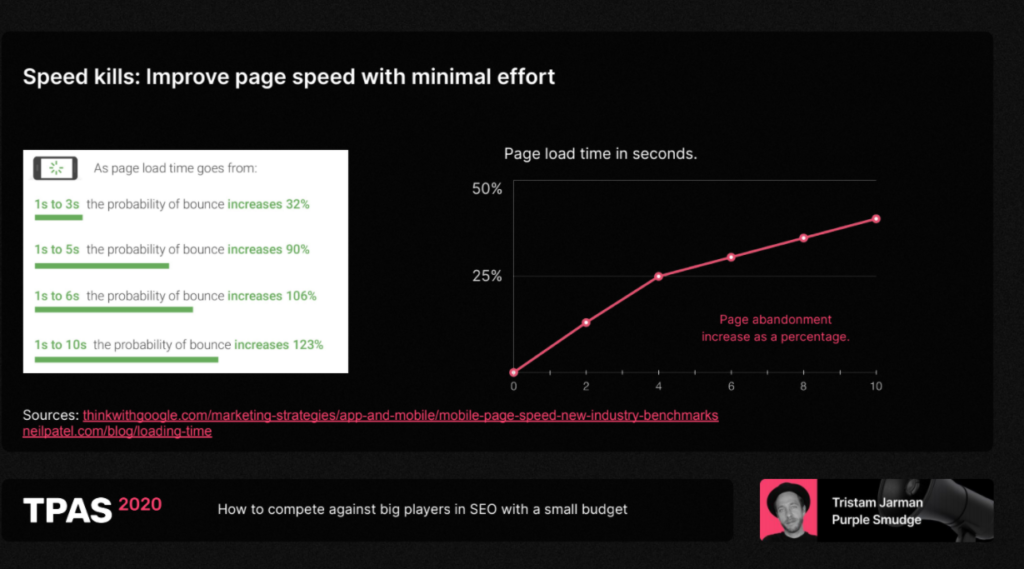
Fortunately, there is a wealth of tools to help you out, such as PageSpeed Insights, GTMetrix, Pingdom, and WebPage Test, which can help you see some commonalities and identify factors that may hinder the overall user experience, such as oversized images, minifying CSS, minifying HTML, etc.

Focus On Local SEO Optimization to Dominate Local Searches
To round the talk off, it’s also crucial to focus on local SEO optimization to dominate local searches. To do this, you can use tools like SEMrush to get insights about search terms around the topic you’re going to write about, more information about what your competitors are doing, and other opportunities around longer tail keywords.
You can find more advice and tips from Tristam Jarman in the full version of the webinar on YouTube.
Presentation
You can download the presentation from the webinar at this link.

